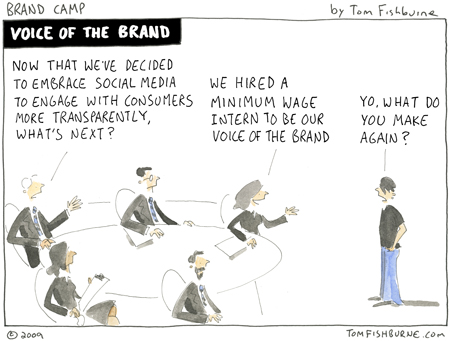 I’ve been spending some time hanging out at several of the Portland food carts over the past couple of weeks getting to know some of the people behind the amazing food. Raven Zachary recently introduced me to Whiffies Fried Pie Cart on Hawthorne, and I started getting to know Gregg Abbott, the man behind those addictive little pies. The Twitter account for @whiffies is very community focused with many replies to conversations, retweets of other interesting posts, and is way less self-promotional than you might expect from a business. The first time I talked to Gregg, we were in a group of techies; we had our iPhones out; we were Tweeting; and we chatted about several obscure location-based technologies that few people outside of the tech community have ever heard of. When I asked him about his background, I expected him to say that he was a freelance programmer / designer or some other web-based profession and was surprised to learn that he’s been working in the food industry. At that point, I wanted to learn more about how he came to Twitter and what it has done for his business. Here’s a quick email interview with Gregg.
I’ve been spending some time hanging out at several of the Portland food carts over the past couple of weeks getting to know some of the people behind the amazing food. Raven Zachary recently introduced me to Whiffies Fried Pie Cart on Hawthorne, and I started getting to know Gregg Abbott, the man behind those addictive little pies. The Twitter account for @whiffies is very community focused with many replies to conversations, retweets of other interesting posts, and is way less self-promotional than you might expect from a business. The first time I talked to Gregg, we were in a group of techies; we had our iPhones out; we were Tweeting; and we chatted about several obscure location-based technologies that few people outside of the tech community have ever heard of. When I asked him about his background, I expected him to say that he was a freelance programmer / designer or some other web-based profession and was surprised to learn that he’s been working in the food industry. At that point, I wanted to learn more about how he came to Twitter and what it has done for his business. Here’s a quick email interview with Gregg.
Dawn: A quick Google search for Gregg Abbott shows that you have been involved in online communities and social networks for a while. How did you get interested in social networking, and how did you use these technologies prior to opening Whiffies?
Gregg: When it comes to social networking via the web it’s really all I’ve ever done. I feel like I’m from the very first generation who grew up with ‘net social networking. When I was 12 years old you could find me on prodigy all night chatting and being social with other like minded people. My community has always sprung from the web. It’s funny to me because the major social networks, let’s take Facebook for example, are simply duplicating AOL circa 1994. Here’s a place to chat and be social while playing fun games and goofing around. I guess what I’m saying is this has been a huge part if my life for some time, and I really enjoy the fact that the number of users has increased so much lately. It has given me a whole lot of opportunities to expand my social circles.
[Dawn’s note: this is where I remind myself that I am not as young as I think I am, since I grew up before this generation who grew up having Internet access.]
Dawn: You have been very active on Twitter under the @whiffies account when you opened the new food cart. How has Twitter or other online technologies helped your business?
Gregg: Twitter has been amazing at connecting me with great people. When I’ve had questions or needed help with something Twitter has rarely failed to help me find what I need. The coolest thing about Twitter, and this is gonna come back to the barn raising analogy (I’m obsessed with Anabaptists forgive me) is the sense of community that it invokes. It’s amazing!! Coming into this I was way more cynical and jaded about people. The truth is, people (especially early adopting tech people) really want to help one another. Every chance they’ve gotten they’ve showed up and been amazing. It’s so inspirational to see. I think (maybe it’s hope) that Twitter is gonna help us move past the bowling alone phase in American culture. For a small business starting out often times the hardest thing is getting the word out to the community about the product and service that you offer. Twitter has been amazingly helpful in overcoming this hurdle. It’s also given me a way to connect with my customers directly. In restaurants (and food carts) on of the biggest obstacles you face is unhappy clients not giving feedback. As a restaurateur, getting honest feedback helps you create better products and a better experience. I think people are a little more comfortable giving feedback to a. someone who seems friendly and receptive and b. through an electronic intermediate. Twitter let’s me have real dialog (awesome to say about <140 character tweets) with people and helps me create better products and a better service.
Dawn: What are your tips for other new businesses who want to do something similar?
Gregg: Tips I have for other businesses are:
- Join the community (this is key and is gonna play into all the rest.)
- Offer your help anywhere you can.
- Don’t be afraid to ask for help.
- Buy a new cart, not a used one.
- Go down and talk to everyone you can in the carts. They’re all super awesome and super helpful.
Dawn: What made you decide to open a fried pie cart and what are your evil plans for world domination of the fried pie market (or maybe Portland domination)?
Gregg: My dad and I have been kicking the idea around for some time. He makes baked handpies in his catering business and being a little bit gluttonous I thought let’s fry these puppies up and see what happens and Whiffies was born.
Community Case Study Summary
As you can see from his tips in the third question, this is a community-oriented guy with a combination of online and offline community. Friends have been teasing me over the past week about my Whiffies pie addiction, but it isn’t just about the pies, it’s about the community. We go down to the carts to hang out and talk to people while we eat our pie, and within a few minutes of tweeting about going, we usually end up with a few friends at the carts hanging out with us.
While I focused on Whiffies for this mini case study, many of the other food carts in Portland (@koifusion, @pdxyarp, etc.) are also embracing Twitter in a good way with a focus on community, instead of spamming us with self-promotional tweets. It’s great to see traditional businesses jumping onto Twitter in a way that makes me want to follow them rather than wanting to run away screaming.
Whiffies is open from 8pm – 3am Tuesday through Saturday if want to check them out. Make sure you say hi to Gregg while you’re there.
 Unfortunately, when an online community fails, it fails publicly. Anyone visiting the community can see that people aren’t participating, and it does not make a good impression. Whereas, traditional websites fail more privately, since only the people with access to your analytics know for sure that no one is visiting the website. Because a failure to get participation is so visible, it is important to launch with some seeded content from real people, in other words, your beta testers.
Unfortunately, when an online community fails, it fails publicly. Anyone visiting the community can see that people aren’t participating, and it does not make a good impression. Whereas, traditional websites fail more privately, since only the people with access to your analytics know for sure that no one is visiting the website. Because a failure to get participation is so visible, it is important to launch with some seeded content from real people, in other words, your beta testers.






